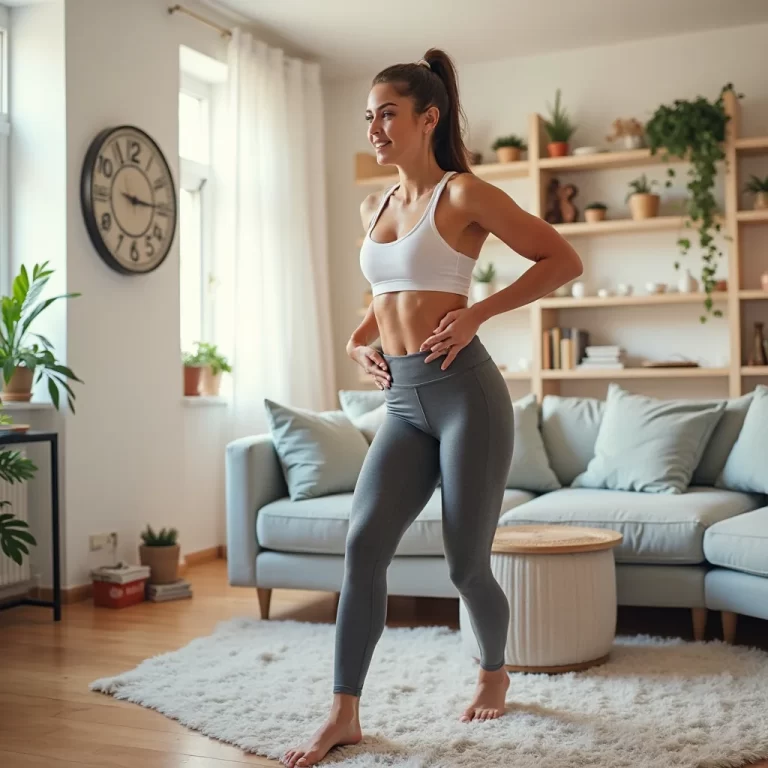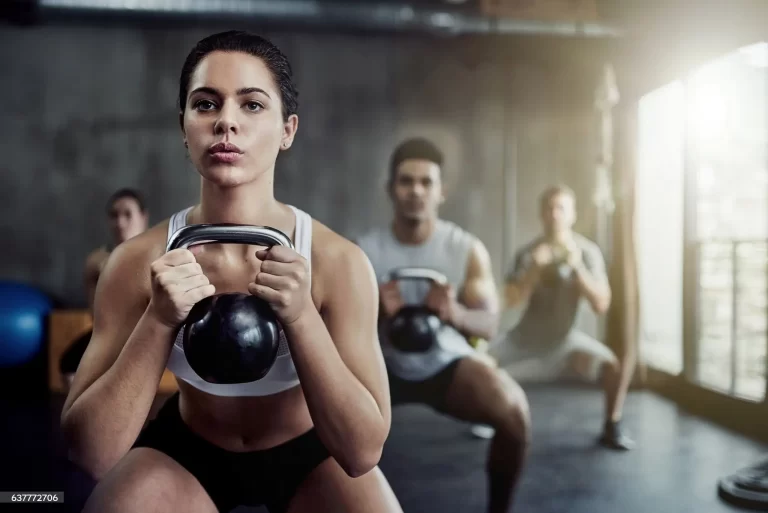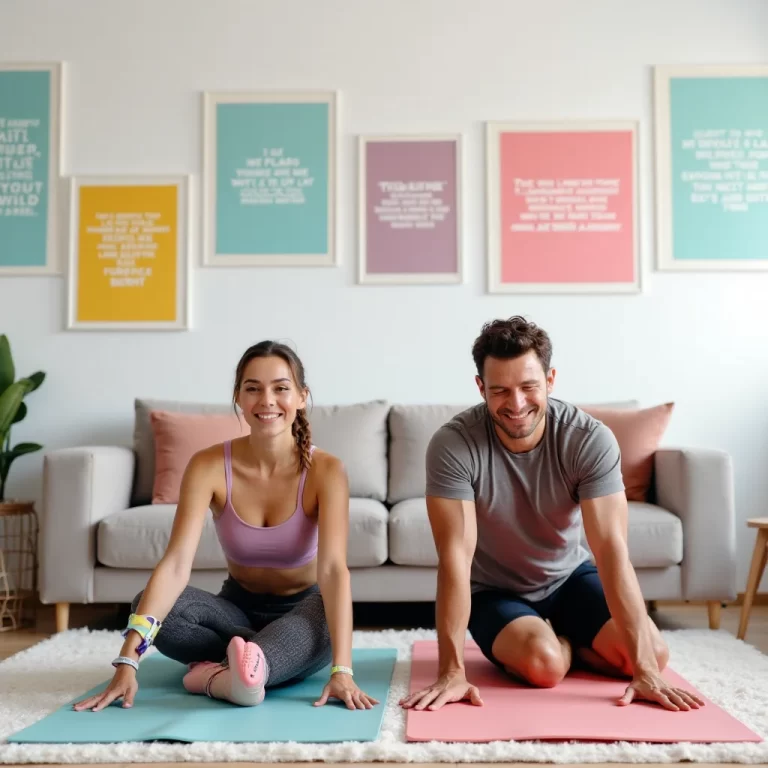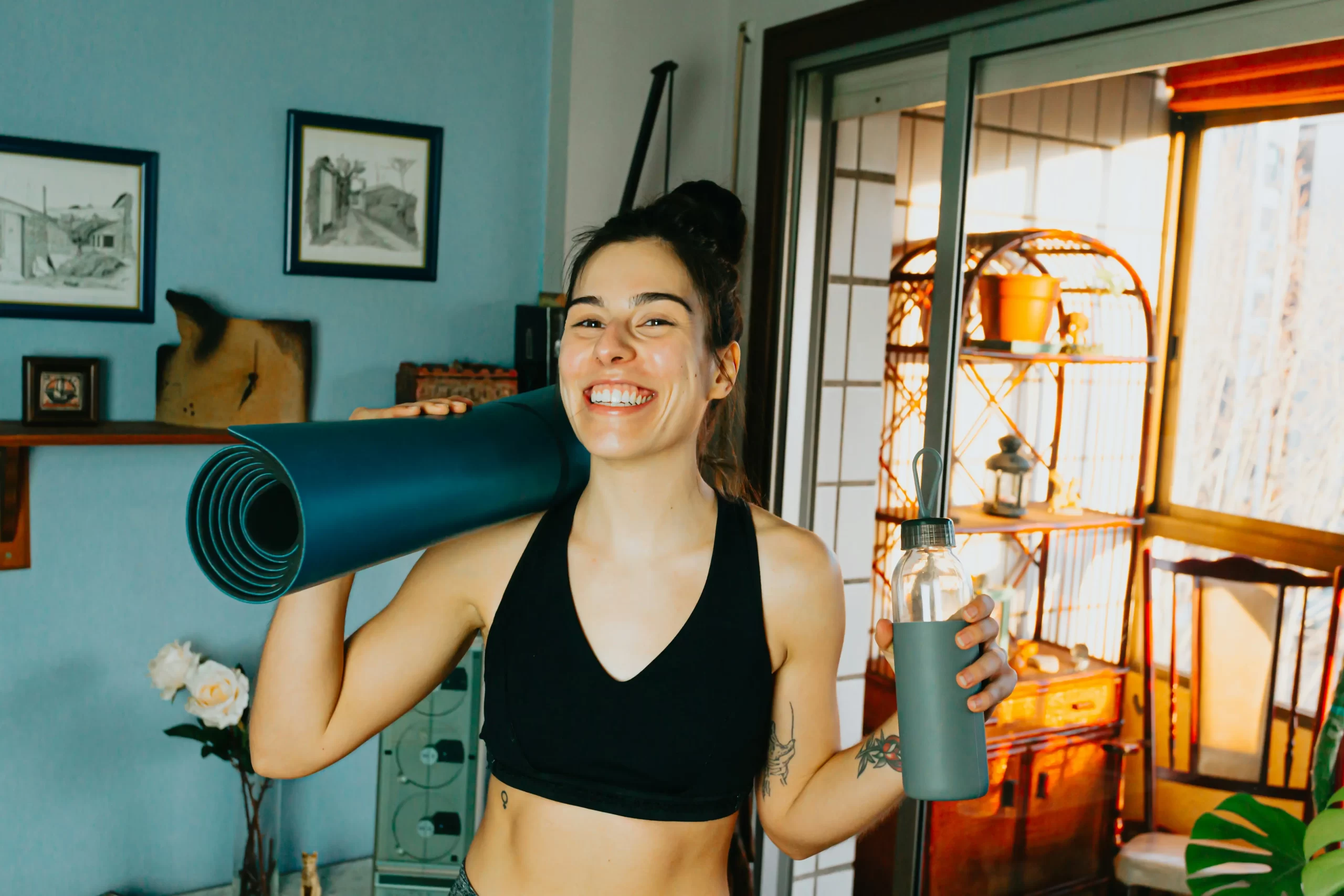
Starting a workout routine at home can feel overwhelming—especially if you’re new to fitness. You might wonder: Will I stick with it? Do I need equipment? How do I even start? The truth is, the best workout routine is one you can maintain long-term.
Sustainability is the key. Instead of jumping into intense programs that leave you exhausted, focus on simple, effective workouts that fit into your daily life. Below, we’ll break down seven realistic, beginner-friendly home workout routines that build strength, endurance, and flexibility—without requiring a gym or expensive gear.
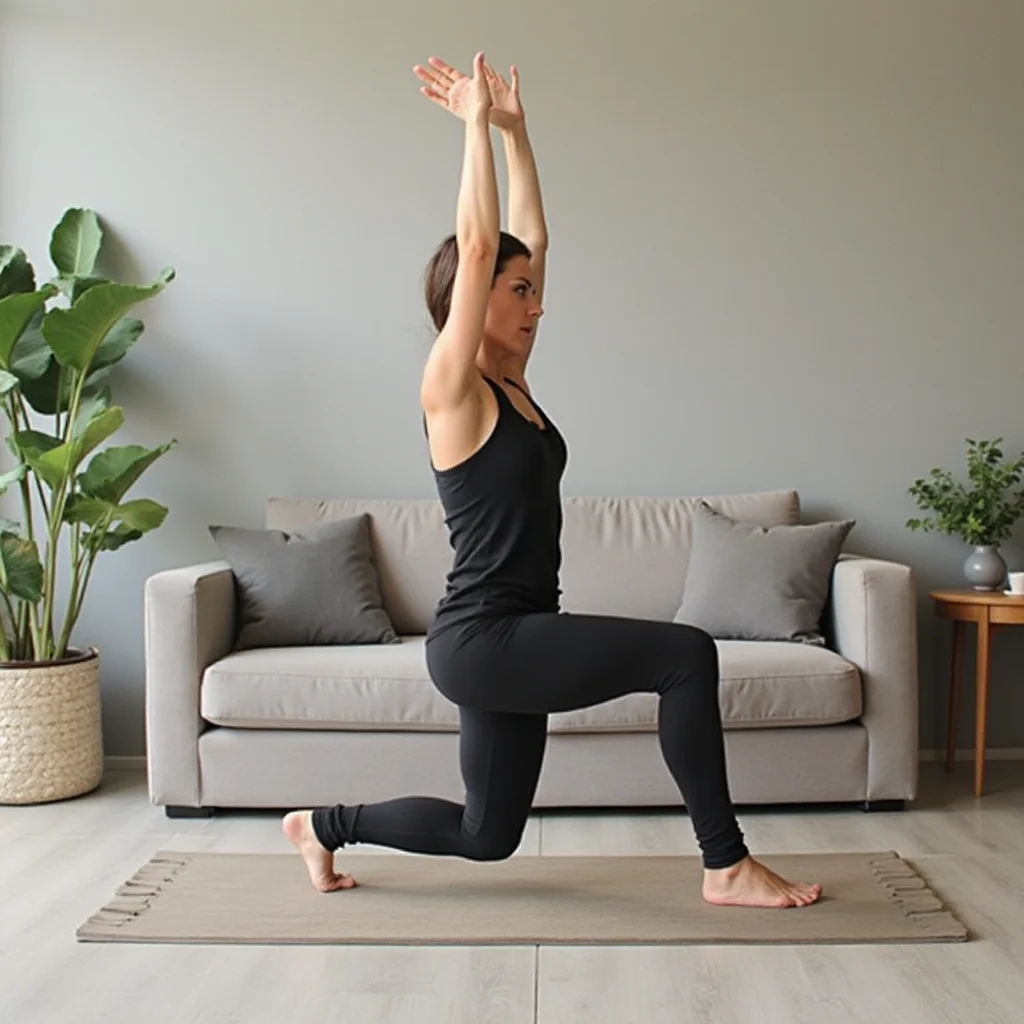
1. The 10-Minute Daily Starter Routine
Best for: Building consistency, absolute beginners
Equipment needed: None
Why It Works:
Starting small removes the intimidation factor. Just 10 minutes a day can create a habit. Over time, you’ll naturally want to do more.
Workout Structure:
- Bodyweight squats – 1 minute
- Wall push-ups or knee push-ups – 1 minute
- Standing or seated knee lifts (march in place) – 1 minute
- Plank hold (on knees if needed) – 30 seconds
- Glute bridges (lie on back, lift hips) – 1 minute
- Repeat 2 rounds
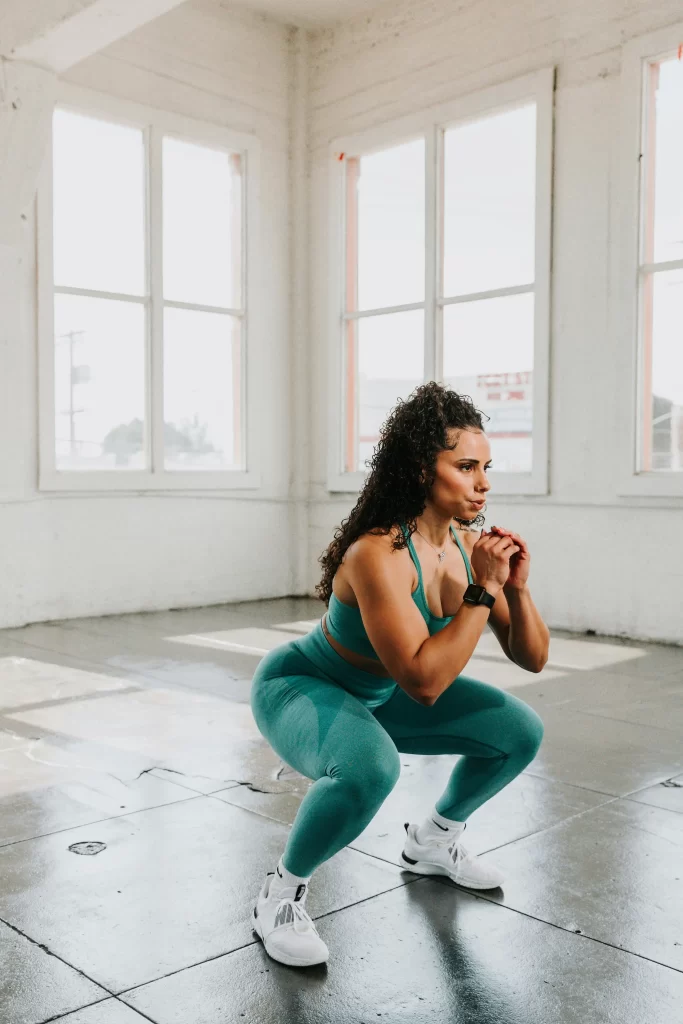
Pro Tip: Do this first thing in the morning—it kickstarts your metabolism and sets a productive tone for the day.
2. Dance Cardio – The Fun Fat Burner
Best for: People who hate traditional workouts
Equipment needed: Speaker or headphones
Why It Works:
Dancing doesn’t feel like exercise, but it burns serious calories (200–400 per 30 minutes). It also releases endorphins, making it a mood booster.
Workout Structure:
- Warm-up (3 min): Gentle swaying, arm circles
- Main session (15 min): Freestyle or follow a YouTube dance workout (e.g., Zumba, hip-hop cardio)
Here you can watch the video for dance cardio: https://youtu.be/v3SGmJPDNVw?si=PcCr0yUk_xQIQv8n - Cool-down (2 min): Slow movements + deep breathing

Pro Tip: Make a high-energy playlist so you’re excited to move.
3. Staircase HIIT – No Equipment Cardio
Best for: Quick, effective cardio in small spaces
Equipment needed: Stairs (or a sturdy elevated surface like a step stool)
Why It Works:
Stair workouts engage your glutes, quads, and calves while getting your heart rate up—similar to hill sprints.
Workout Structure:
- Stairs Sprints – 1 minute
- Step Hops– 1 minute
- Side Steps (Both feet on every steps) – 1 minute
- Lateral Step-Up Squats – 1 minute each side
- Toe Taps – 1 minute
- Lunges ( 15 reps each leg)
- Calf Raises (Both feet) – 20 reps
- Single-Leg Calf Raises – 10-15 reps each leg
- Push-ups – 15 reps
Pro Tip: Hold onto the railing if balance is an issue.
4. Beginner Yoga Flow – Strength + Flexibility
Best for: Reducing stiffness, improving mobility
Equipment needed: Yoga mat (optional)
Why It Works:
Yoga builds strength through bodyweight holds while improving flexibility and breathing.
Workout Structure:
- Cat-Cow Stretch (1 min)
- Downward Dog (30 sec)
- Warrior I (each side) (30 sec)
- Child’s Pose (1 min)
- Bridge Pose (30 sec)
- Seated Forward Fold (1 min)

Pro Tip: Follow along with a YouTube video (e.g., “Yoga with Adriene”) if you’re new to poses.https://youtube.com/@yogawithadriene?si=SJUIwCx8OJytTeIv
5. Resistance Band Full-Body Toner
Best for: Building muscle without heavy weights
Equipment needed: Resistance bands (light to medium)
Why It Works:
Bands add tension to movements, activating muscles differently than free weights.
Workout Structure:
- Band Rows (pull band toward waist) – 12 reps
- Band Squats (stand on band, hold ends, squat) – 10 reps
- Bicep Curls (step on band, curl up) – 12 reps
- Lateral Walks (band around thighs, sidestep) – 10 steps each way
- Repeat 3 rounds
- If you find difficulties in doing exercises ,you can watch this video:https://youtu.be/18hPypKsQ8w?si=N-uc4eHhFDDi8BQ_
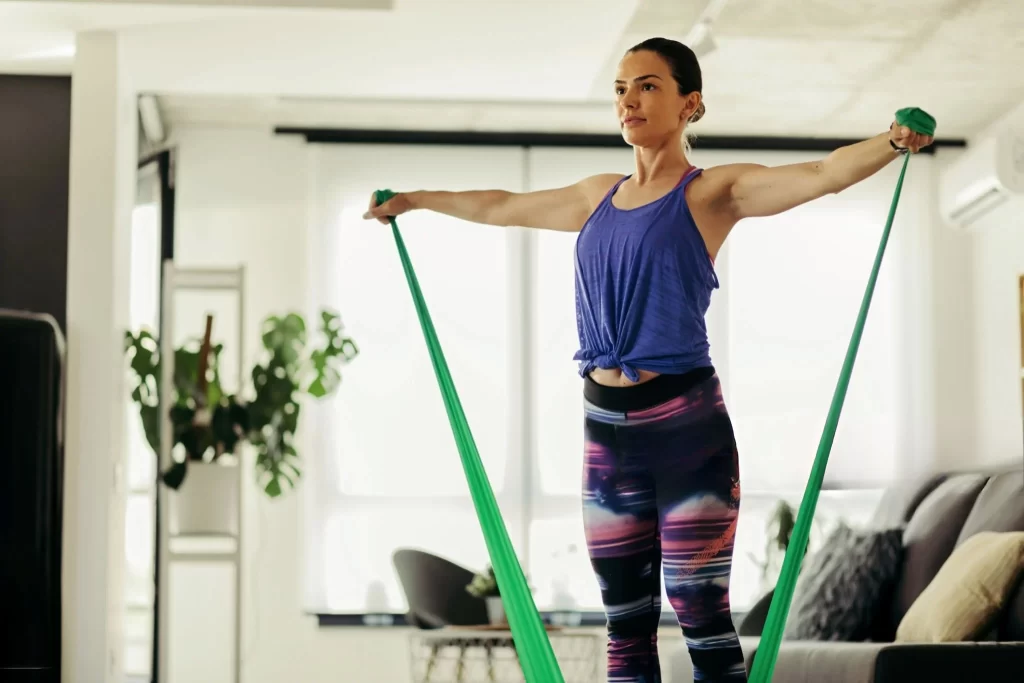
Pro Tip: Focus on slow, controlled movements for maximum muscle engagement.
6. The Commercial Break Workout – Sneaky Fitness
Best for: People who watch TV daily
Equipment needed: None
Why It Works:
Turning TV time into mini-workouts makes fitness feel effortless.
Workout Structure:
Every time ads come on (or between episodes):
- 20 jumping jacks
- 10 sit-ups
- 15-second wall sit
- 5 push-ups (knee or wall version if needed)
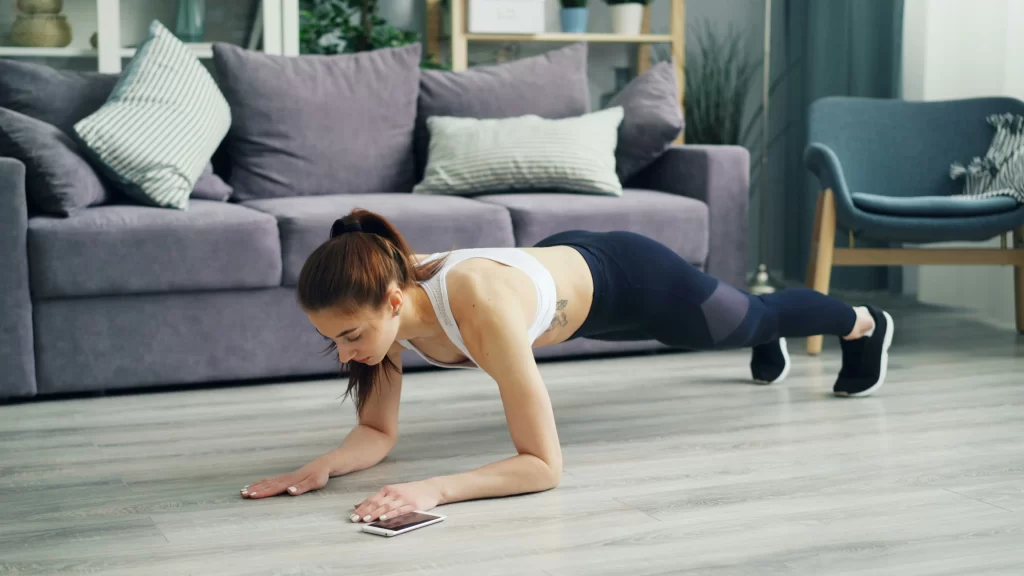
Pro Tip: Keep a water bottle nearby to stay hydrated.
7. Shadowboxing – Stress-Busting Cardio
Best for: Releasing tension, improving coordination
Equipment needed: None (optional: light hand weights)
Why It Works:
Punching movements engage your core, shoulders, and arms while burning calories fast.
Workout Structure:
- Dynamic Warmup
- Jumping Jacks + Punches
- Uppercuts + Burpees
- Jumping Squats+ Punches
- Burnout
- Cooldown
Pro Tip: Imagine dodging punches for added intensity.
How to Stick With Your Routine Long-Term
1. Start Too Easy (Seriously)
If you’re exhausted after the first session, you won’t want to repeat it. Beginner workouts should feel manageable—almost too easy. This builds confidence and consistency.
2. Pair Workouts with Habits You Already Have
- Do squats while brushing your teeth.
- Stretch during coffee breaks.
- Plank for 30 seconds before showering.
Habit stacking makes fitness automatic.
3. Track Non-Scale Victories
Instead of obsessing over weight loss, notice:
- How many push-ups you can do now vs. Week 1
- How much deeper your squats are
- How much better you sleep
4. Change It Up Every Few Weeks
Your body adapts quickly. Swap one workout for a new one monthly to keep progress going.
5. Reward Effort, Not Just Results
Celebrate showing up—even if the workout was short. Consistency > perfection.
Common Mistakes to Avoid
1. Doing Too Much Too Soon
Beginners often push too hard and then quit. Start at 50% of your max effort and gradually increase.
2. Skipping Warm-ups/Cool-downs
Just 2-3 minutes of dynamic stretches prevents injuries and soreness.
3. Comparing Yourself to Others
Your neighbor’s fitness journey has nothing to do with yours. Focus on your own progress.
4. Using Poor Form
Quality beats quantity. It’s better to do 5 perfect push-ups than 15 sloppy ones.
5. Not Listening to Your Body
Some muscle soreness is normal, but sharp pain means stop. Rest is part of fitness too.
Frequently Asked Questions
1. How often should I do these home workouts as a beginner?
Start with 3-4 sessions per week, allowing rest days in between. As you build endurance, you can increase to 5-6 days. Remember – consistency matters more than intensity when starting out.
2. What if I don’t see results right away?
Fitness changes happen gradually. Instead of focusing just on the scale, notice:
- Improved energy levels
- Better sleep quality
- Increased strength (like doing more push-ups)
- Clothes fitting better
3. Can I combine different routines?
Absolutely! Try:
- Yoga + Resistance Bands (2-3x/week)
- Dance Cardio + Shadowboxing (alternate days)
- Stair Workouts + Bodyweight Exercises
4. How do I stay motivated when working out alone?
Try these tricks:
- Follow along with YouTube workout videos
- Join an online fitness challenge
- Track your progress in a notebook
- Reward yourself after consistent weeks
5. What should I eat to support these workouts?
Focus on:
- Lean proteins (chicken, eggs, beans)
- Complex carbs (oats, sweet potatoes)
- Healthy fats (avocados, nuts)
- Plenty of water (half your body weight in oz daily)
Final Thought: Fitness Is a Lifelong Journey—Start Where You Are
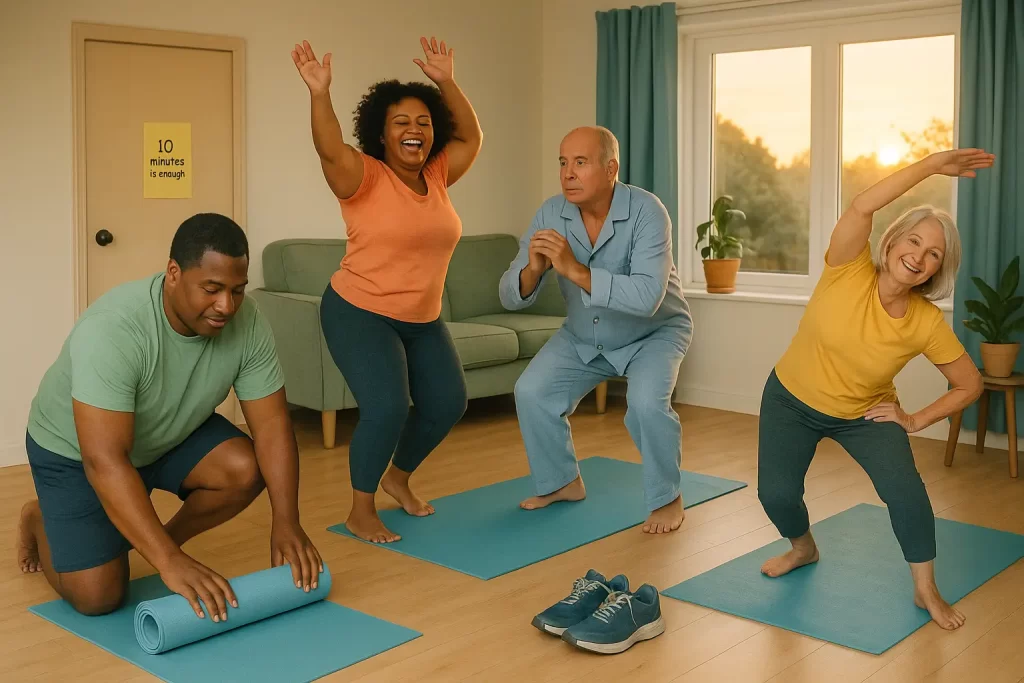
The most important workout is the one you actually do—not the perfect one you keep putting off. Sustainable fitness isn’t about extreme transformations or punishing routines. It’s about showing up, even when it’s just for 10 minutes. It’s about finding movement you enjoy, not forcing yourself through workouts you hate.
These seven routines prove that you don’t need a gym, expensive equipment, or even a lot of time to build strength, endurance, and confidence. The only wrong way to work out is not starting at all.
So forget “all or nothing.” Forget comparing yourself to fitness influencers. Your journey is yours alone—and it begins with a single step.
Which routine will you try first? Roll out your mat, press play on that dance video, or lace up your sneakers. Your stronger, healthier future starts today—one small, sustainable workout at a time.
Now go get moving—you’ve got this. 💪

